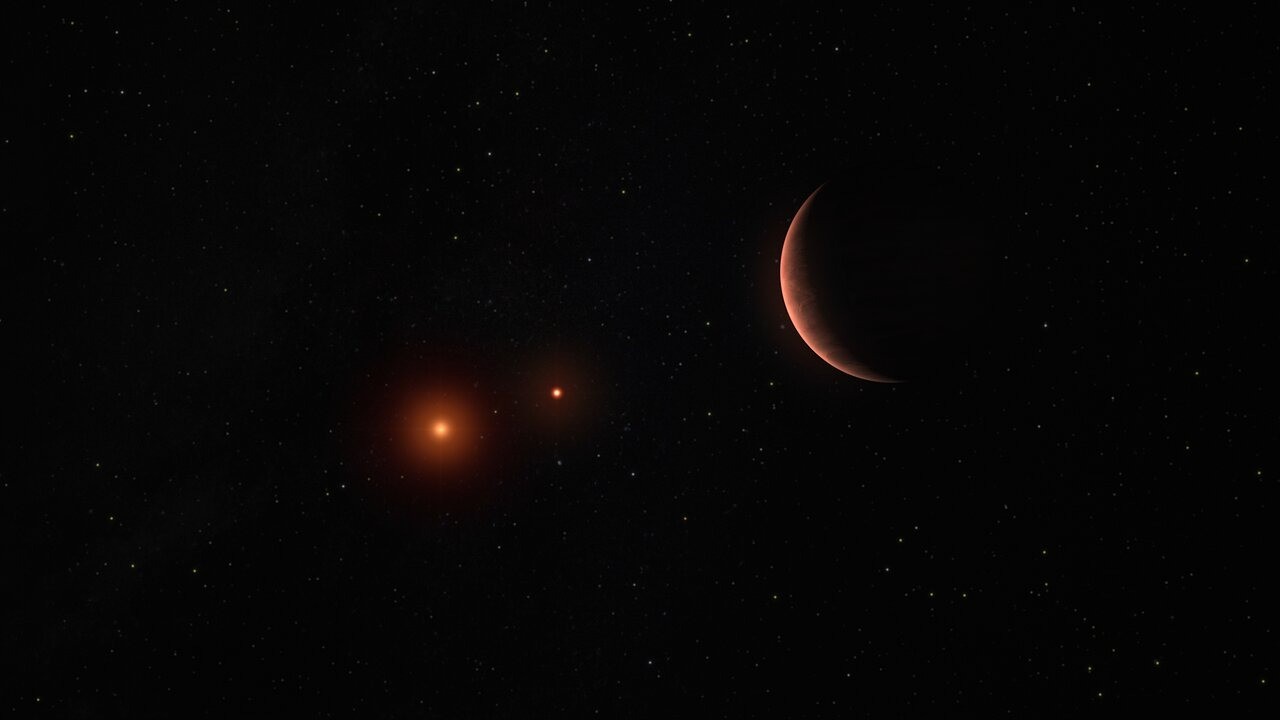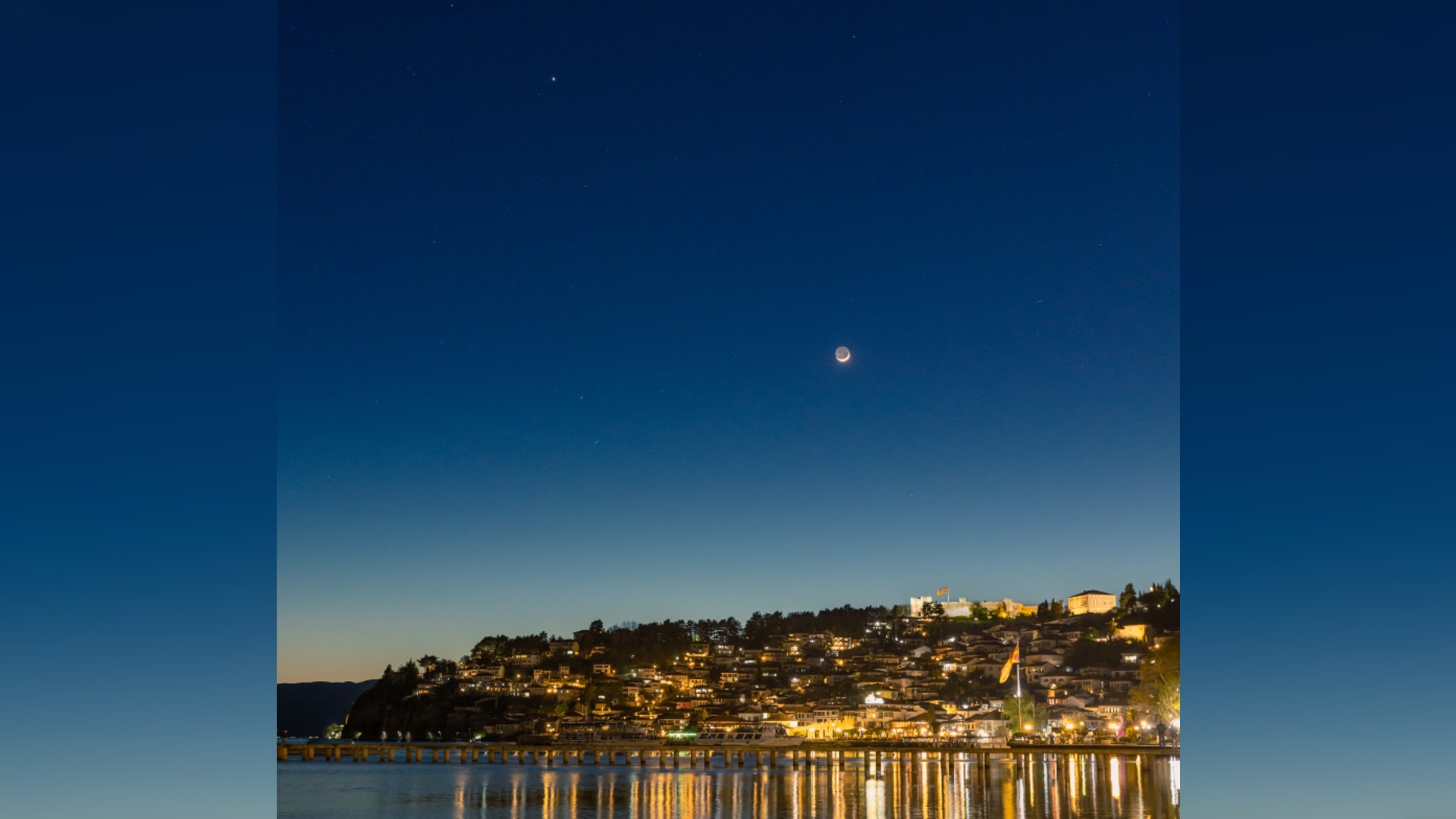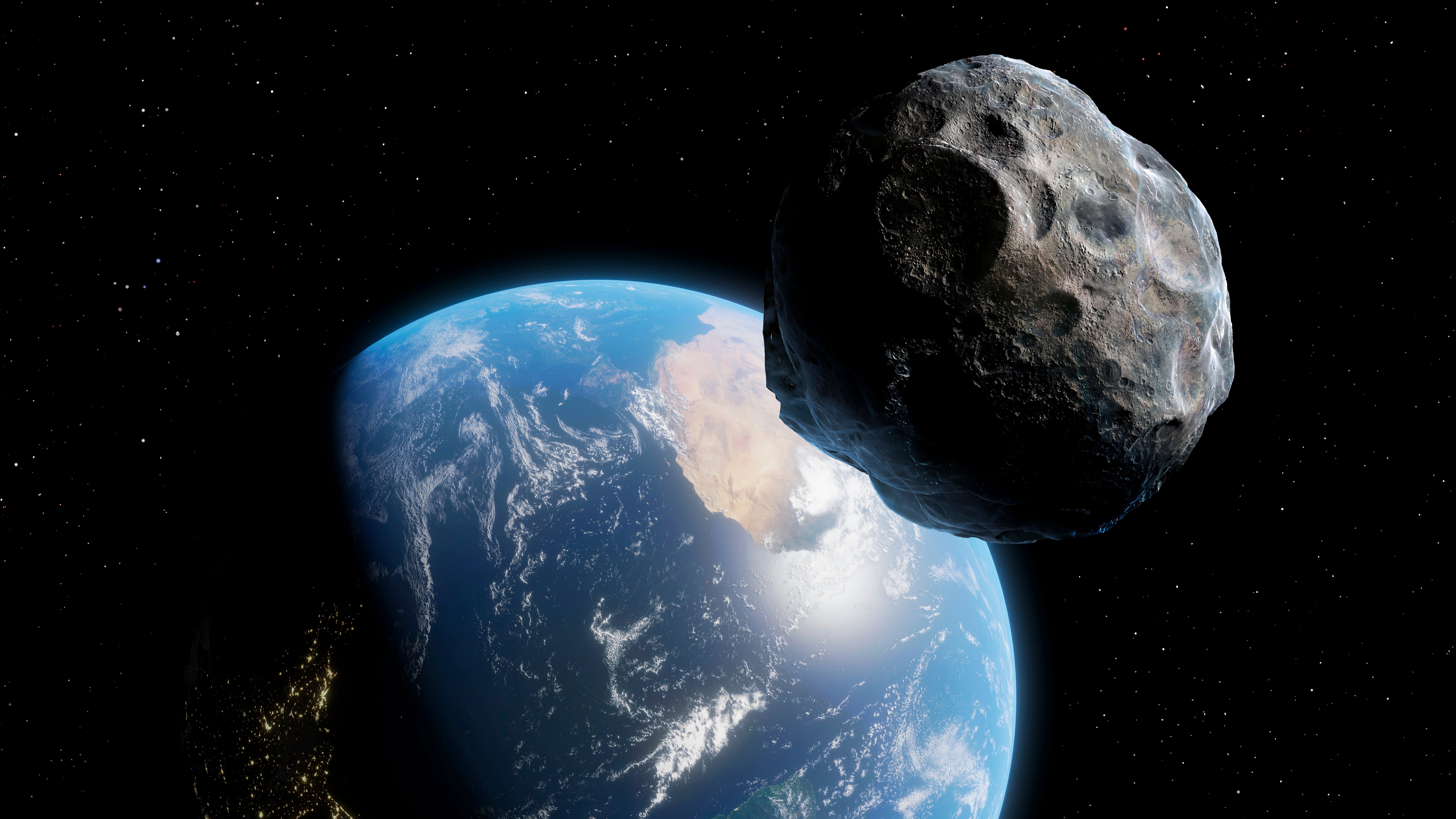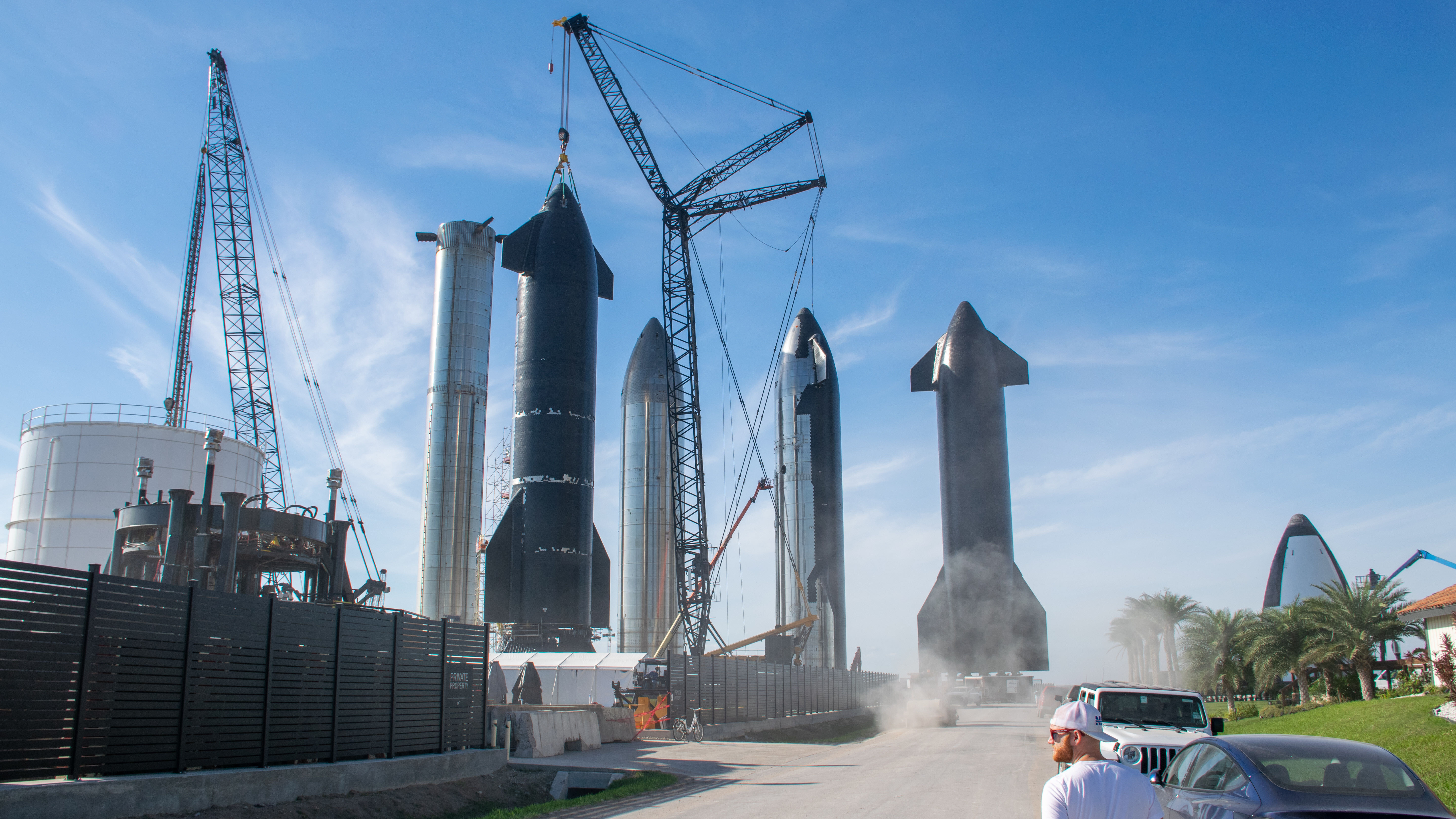Exoplanet's surface may be covered in oceans, James Webb Space Telescope finds
The so-called Hycean planet K2–18 b is around twice the size of Earth and orbits in the habitable zone of a star located 120 light-years from our solar system.
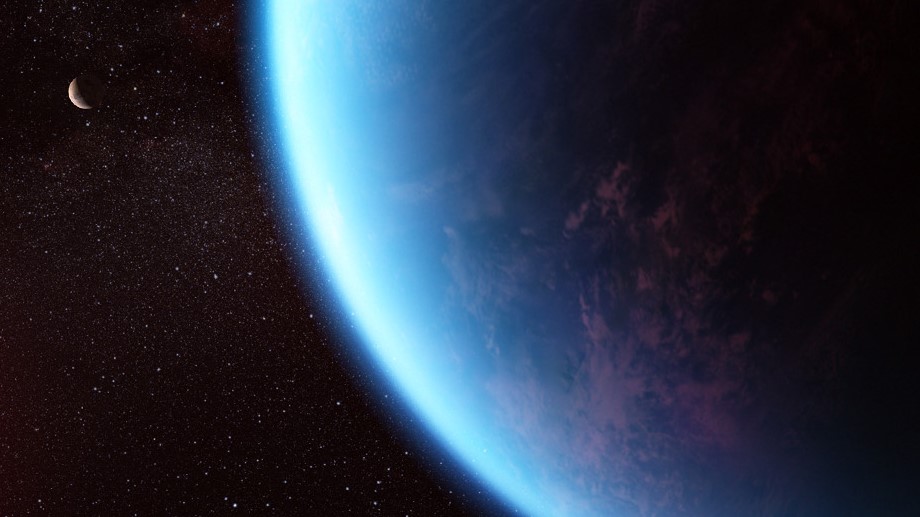
The James Webb Space Telescope (JWST) has discovered evidence of carbon-based molecules in the atmosphere of a suspected ocean world.
The extra-solar planet or exoplanet known as K2–18 b is a tantalizing target for astronomers as they search for life beyond the solar system, as previous research and observations with the Hubble Space Telescope have indicated that the planet could be an ocean or "Hycean" world replete with liquid water — a vital ingredient for life. K2–18 b has a radius between two and three times larger than Earth's and located 120 light-years away from the solar system.
The new results showed traces of carbon dioxide and methane in K2–18 b's atmosphere without detecting ammonia, which likely indicates a water ocean under a hydrogen-rich atmosphere.
"Our findings underscore the importance of considering diverse habitable environments in the search for life elsewhere," research lead author and University of Cambridge scientist Nikku Madhusudhan said in a statement. "Traditionally, the search for life on exoplanets has focused primarily on smaller rocky planets, but the larger Hycean worlds are significantly more conducive to atmospheric observations."
Related: How NASA's Habitable Worlds Observatory will search exoplanets for signs of alien life
With mass around 8.6 times that of Earth and located in its cool star's habitable zone — the region which is neither too hot nor too cold to host liquid water — K2–18 b is an example of a planet with a size between Earth and the solar system ice giant Neptune. These worlds are referred to as "sub-Neptunes" and are unlike any planets in the solar system, which makes them something of a mystery to astronomers, who are currently debating the nature of their atmospheres.
This research should help start to lift the veil surrounding the atmospheres and environmental conditions of both sub-Neptunes and Hycean worlds.
Get the Space.com Newsletter
Breaking space news, the latest updates on rocket launches, skywatching events and more!
Is this proof of life outside the solar system?
In addition to turning up carbon molecules, the JWST findings also showed the possible presence of something potentially more exciting in the atmosphere of K2–18 b.
The space telescope seems to have detected dimethyl sulfide (DMS), which on Earth is only produced as a by-product of life, mainly created by phytoplankton. The team is cautious about this detection, which is far less certain than the presence of carbon molecules. "Upcoming Webb observations should be able to confirm if DMS is indeed present in the atmosphere of K2–18 b at significant levels," explained Madhusudhan.
This sense of caution has to be applied to the K2–18 b findings in general when it comes to speculating about alien life. Even if the planet has a liquid water ocean and an atmosphere containing carbon molecules, that doesn't necessarily mean it harbors life or that the exoplanet could even support living things at all.
With a width of around 2.6 times that of Earth, the planet's size means its interior contains high-pressure ice similar to Neptune but with a thinner atmosphere and an ocean surface. This means the planet may be boiling away liquid water, making its oceans too hot to host life.
How the James Webb Space Telescope saw right through an ocean world
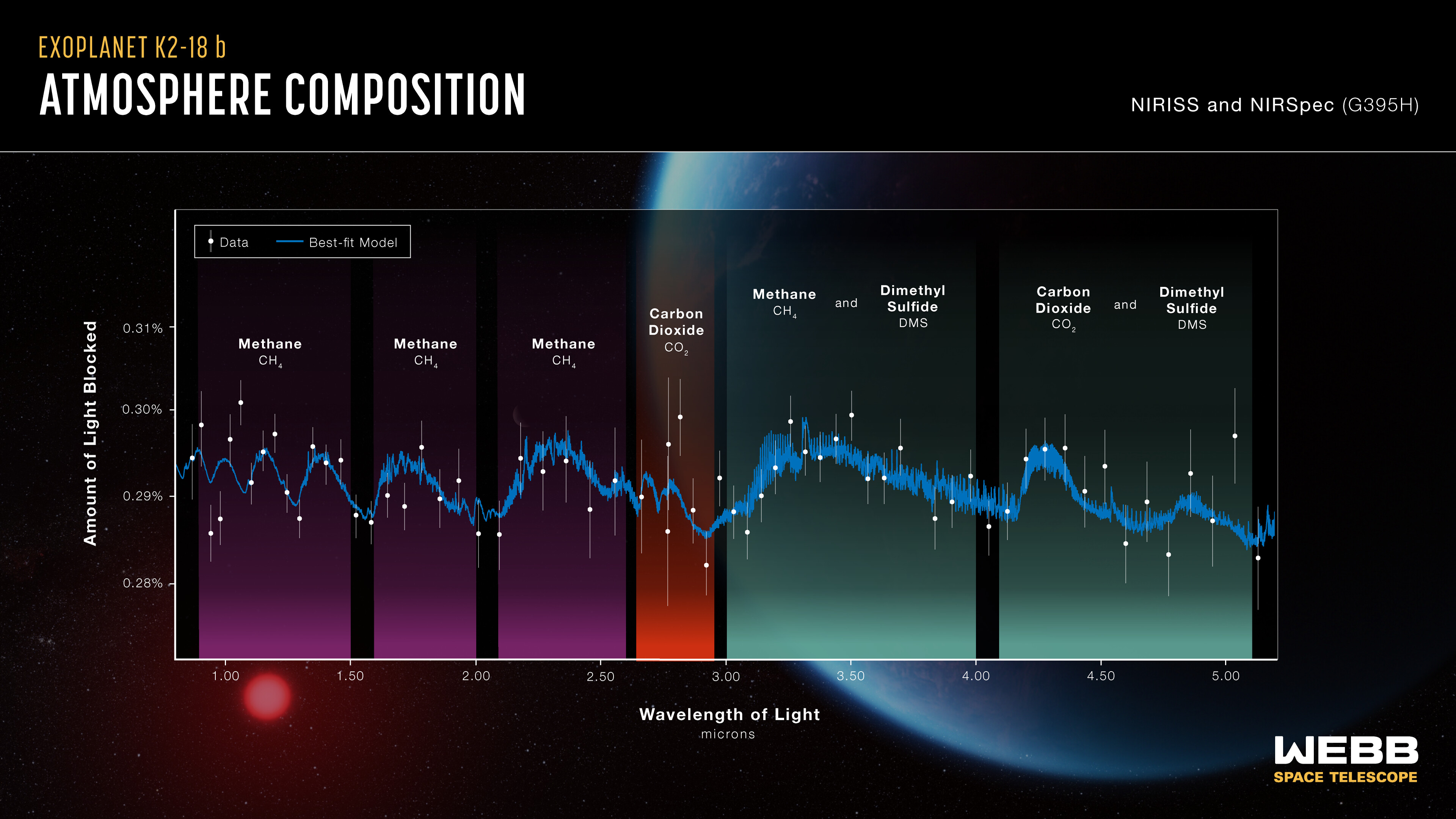
Assessing the composition of the atmospheres of distant worlds like K2–18 b is no easy task because the light that reflects off their atmospheres is very faint compared to the light from their parent stars. Madhusudhan and the team did this for K2–18 b by waiting for the planet to cross the face of its star from the perspective of the JWST. This means that the light of its parent star shines directly through the atmosphere of the planet.
Chemical elements and compounds absorb and emit light at specific and characteristic wavelengths, which means when they are in the atmosphere of a planet, they leave a distinctive "fingerprint" on starlight — the star's "spectra" — as it passes through that atmosphere.
"This result was only possible because of the extended wavelength range and unprecedented sensitivity of the JWST, which enabled robust detection of spectral features with just two transits," Madhusudhan explained. "For comparison, one transit observation with the JWST provided comparable precision to eight observations with Hubble conducted over a few years and in a relatively narrow wavelength range."
The team's findings reflect data collected by the JWST during just two transits of K2–18 b across the face of its parent star. More observations of the exoplanet are on the way, but the team behind these findings thinks what they have seen thus far is already proof of the power of the JWST, with just one transit able to deliver as much data as Hubble could reap in eight similar crossings.
The team will now continue to observe K2–18 b with the JWST, and its Mid-Infrared Instrument (MIRI) in particular, as they aim to validate their findings and also gather more intel about the environmental conditions on the exoplanet.
"Our ultimate goal is the identification of life on a habitable exoplanet, which would transform our understanding of our place in the universe," Madhusudhan concluded. "Our findings are a promising step towards a deeper understanding of Hycean worlds in this quest."
The team's research has been accepted for publication in the Astrophysical Journal Letters.
Join our Space Forums to keep talking space on the latest missions, night sky and more! And if you have a news tip, correction or comment, let us know at: community@space.com.

Robert Lea is a science journalist in the U.K. whose articles have been published in Physics World, New Scientist, Astronomy Magazine, All About Space, Newsweek and ZME Science. He also writes about science communication for Elsevier and the European Journal of Physics. Rob holds a bachelor of science degree in physics and astronomy from the U.K.’s Open University. Follow him on Twitter @sciencef1rst.
-
rod The space.com article does call attention to something important about K2-18 b. "Is this proof of life outside the solar system? In addition to turning up carbon molecules, the JWST findings also showed the possible presence of something potentially more exciting in the atmosphere of K2–18 b. The space telescope seems to have detected dimethyl sulfide (DMS), which on Earth is only produced as a by-product of life, mainly created by phytoplankton. The team is cautious about this detection, which is far less certain than the presence of carbon molecules. "Upcoming Webb observations should be able to confirm if DMS is indeed present in the atmosphere of K2–18 b at significant levels," explained Madhusudhan. This sense of caution has to be applied to the K2–18 b findings in general when it comes to speculating about alien life. Even if the planet has a liquid water ocean and an atmosphere containing carbon molecules, that doesn't necessarily mean it harbors life or that the exoplanet could even support living things at all. With a width of around 2.6 times that of Earth, the planet's size means its interior contains high-pressure ice similar to Neptune but with a thinner atmosphere and an ocean surface. This means the planet may be boiling away liquid water, making its oceans too hot to host life."Reply
I note here from the 22-page PDF on this exoplanet. ref - Carbon-bearing Molecules in a Possible Hycean Atmosphere, https://esawebb.org/media/archives/releases/sciencepapers/weic2321/weic2321a.pdf, 11-Sep-2023. “ABSTRACT The search for habitable environments and biomarkers in exoplanetary atmospheres is the holy grail of exoplanet science...." “1. INTRODUCTION The detection and characterisation of habitable-zone exoplanets is a major frontier in modern astronomy. Until recently, the quest for exoplanetary habitability and biosignatures have been focused primarily on rocky exoplanets, naturally motivated by the terrestrial experience of life (Kasting et al. 1993; Meadows & Barnes 2018). The extreme diversity of exoplanetary systems witnessed over the past three decades motivates considerations of new avenues in the search for life elsewhere."
My note, given the mass and radius published for K2-18 b, the surface gravity is 1.5879E+00 or almost 1.6 g where on Earth we have 1.0 g. Without Charles Darwin desire for a general law of nature that shows how life evolves from non-living matter as he expressed in his letter of 28-Feb-1882 established among the laws of nature, on what basis do we extrapolate the origin of life developing from non-living matter on hycean worlds? Abiogenesis would need to be very flexible and fall under a general law of nature I would think.
From the 22-page PDF report. "4.3. Possible Evidence of Life Our potential evidence for DMS in K2-18 b motivates consideration of possible biological activity on the planet. While the present evidence is not as strong as that for CH4 or CO2, upcoming JWST observations of K2-18 b will be able to robustly constrain the presence and abundance of DMS, as discussed in section 4.5 and earlier work (Madhusudhan et al. 2021). Here we discuss the plausibility of our DMS abundance constraints from a potential biosphere on K2-18 b in order to inform future observations and retrieval studies." -
Harmonograms Two very important caveats here: 1. The detection of dimethyl sulphide, which is indicative of simple lifeforms such as phytoplankton, was very preliminary and must be confirmed on subsequent observations. 2. Due to the stupendous nature of the discovery of alien life, the JWST cannot confirm this discovery by itself (due to previously established protocols) and it must be verified by another source to corroborate its certainty.Reply -
rod Harmonograms, I would think your points 1 and 2 are needed very much for such reporting, especially to the public. We have 5510 exoplanets confirmed at this site, http://exoplanet.eu/, and 5514 exoplanets at the NASA archive site, https://exoplanetarchive.ipac.caltech.edu/index.htmlReply
This space.com report and some others today (Webb discovers methane, carbon dioxide in atmosphere of K2-18 b, https://phys.org/news/2023-09-webb-methane-carbon-dioxide-atmosphere.html), is the first I read where alien life could be claimed living on an exoplanet. I remember reports of phosphine in Venus's atmosphere, Martian meteorite ALH84001, and other reports of life on Mars. Example, NASA may have unknowingly found and killed alien life on Mars 50 years ago, scientist claims, https://forums.space.com/threads/nasa-may-have-unknowingly-found-and-killed-alien-life-on-mars-50-years-ago-scientist-claims.63068/ -
billslugg I went through the 22 page PDF but could not see any corespondence between the spectrums. I don't see ho they got DMS out of the images presented. Couldn't make heads or tails of it.Reply -
Helio There are other likely problematic circumstances:Reply
1) It orbits is at 0.14 AU, so it probably is in a tidal lock.
2) It orbits an M2.5 class star, which are becoming more and more known to be stars that throw tantrums (CMEs, flares, etc.)
3) It's also in the hotter portion of the HZ using the stellar class method for luminosity or for the temperature method (star temp.)
4) It is about 20% farther beyond the HZ zone closer to the star, thus too hot for liquid water, based on the Kopparapu et. al. method (atmospherics).
